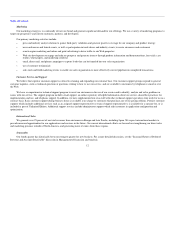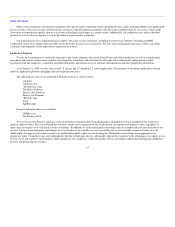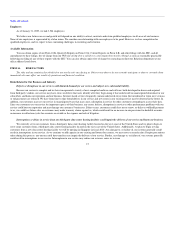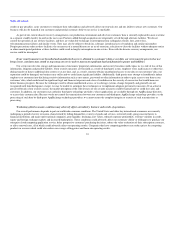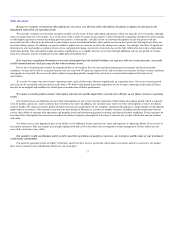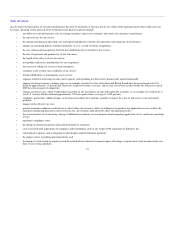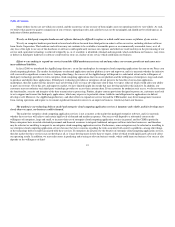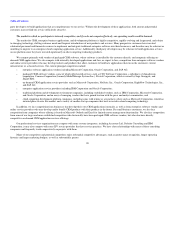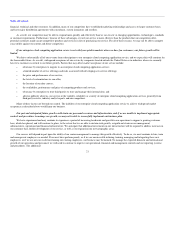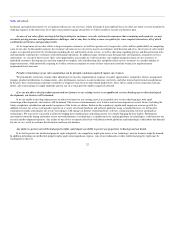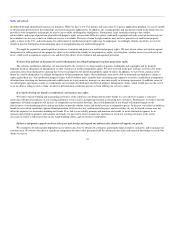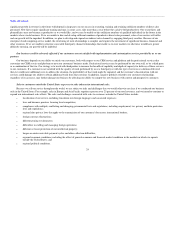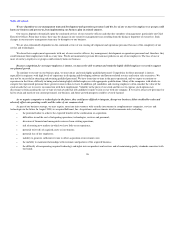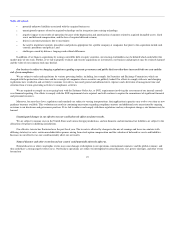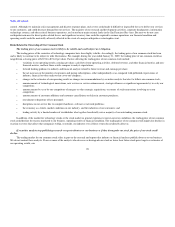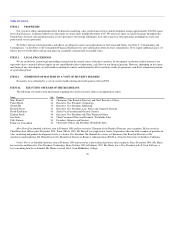Salesforce.com 2008 Annual Report Download - page 24
Download and view the complete annual report
Please find page 24 of the 2008 Salesforce.com annual report below. You can navigate through the pages in the report by either clicking on the pages listed below, or by using the keyword search tool below to find specific information within the annual report.
Table of Contents
financial, technical and other resources. In addition, many of our competitors have established marketing relationships and access to larger customer bases,
and have major distribution agreements with consultants, system integrators and resellers.
As a result, our competitors may be able to respond more quickly and effectively than we can to new or changing opportunities, technologies, standards
or customer requirements. Furthermore, because of these advantages, even if our service is more effective than the products that our competitors offer,
potential customers might accept competitive products and services in lieu of purchasing our service. For all of these reasons, we may not be able to compete
successfully against our current and future competitors.
If our enterprise cloud computing application service is not widely accepted in markets where we have few customers, our future growth will be
limited.
We derive substantially all of our revenue from subscriptions to our enterprise cloud computing application service, and we expect this will continue for
the foreseeable future. As a result, widespread acceptance of our service by companies located outside the United States or in industries where we currently
have few customers is critical to our future growth. Factors that may affect market acceptance of our service include:
• reluctance by enterprises to migrate to an enterprise cloud computing application service;
• a limited number of service offerings and risks associated with developing new service offerings;
• the price and performance of our service;
• the level of customization we can offer;
• the location of our data centers;
• the availability, performance and price of competing products and services;
• reluctance by enterprises to trust third parties to store and manage their internal data; and
• adverse publicity about us, our service or the viability, reliability or security of enterprise cloud computing application services generally from
third party reviews, industry analyst reports and our competitors.
Many of these factors are beyond our control. The inability of our enterprise cloud computing application service to achieve widespread market
acceptance as described above would harm our business.
Our past and anticipated future growth could strain our personnel resources and infrastructure, and if we are unable to implement appropriate
controls and procedures to manage our growth, we may not be able to successfully implement our business plan.
We have experienced and may continue to experience a period of increasing headcount and growth in our operations to support a growing customer
base, which has placed, and will continue to place, to the extent that we are able to sustain such growth, a significant strain on our management,
administrative, operational and financial infrastructure. We anticipate that additional investments in our infrastructure will be required to address increases in
our customer base, further development of our service, as well as our expansion into new geographic areas.
Our success will depend in part upon the ability of our senior management to manage this growth effectively. To do so, we must continue to hire, train
and manage new employees as needed. If our new hires perform poorly, or if we are unsuccessful in hiring, training, managing and integrating these new
employees, or if we are not successful in retaining our existing employees, our business may be harmed. To manage the expected domestic and international
growth of our operations and personnel, we will need to continue to improve our operational, financial and management controls and our reporting systems
and procedures. The additional
21



